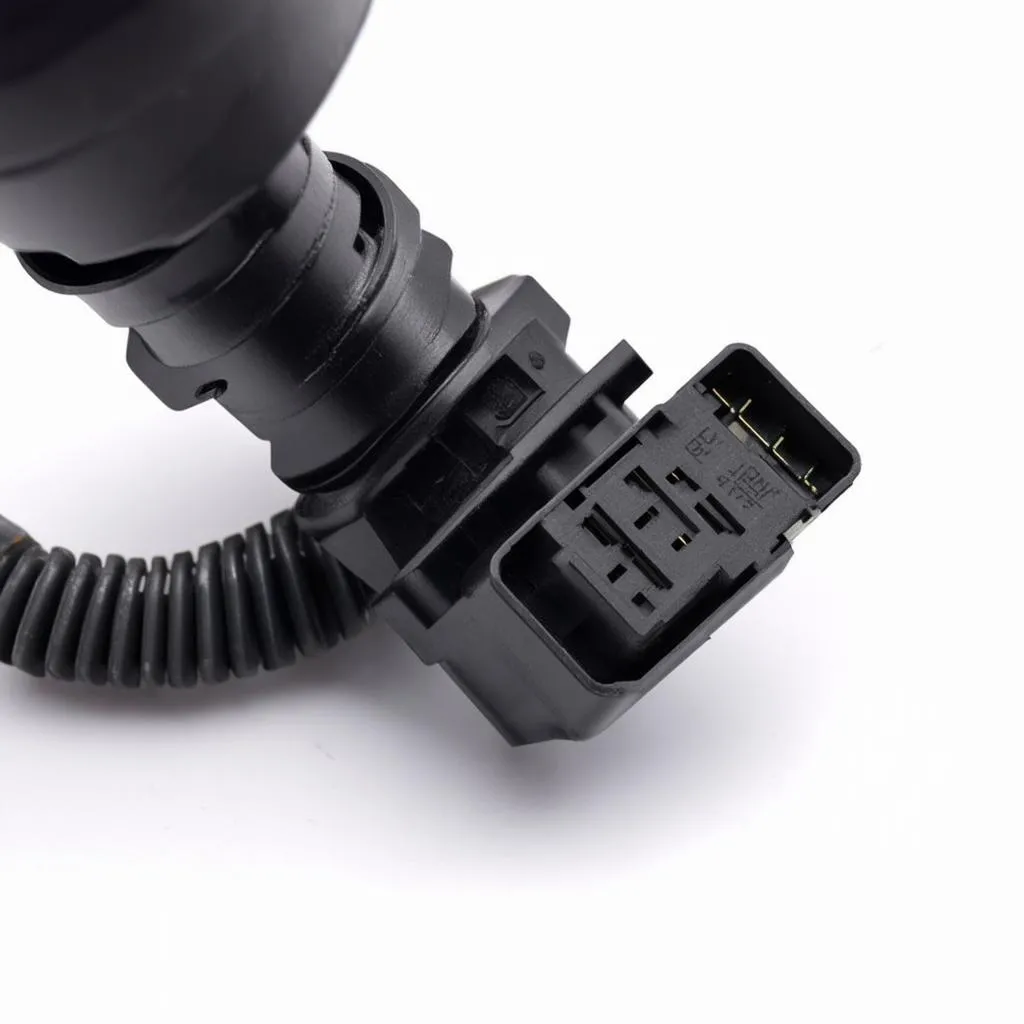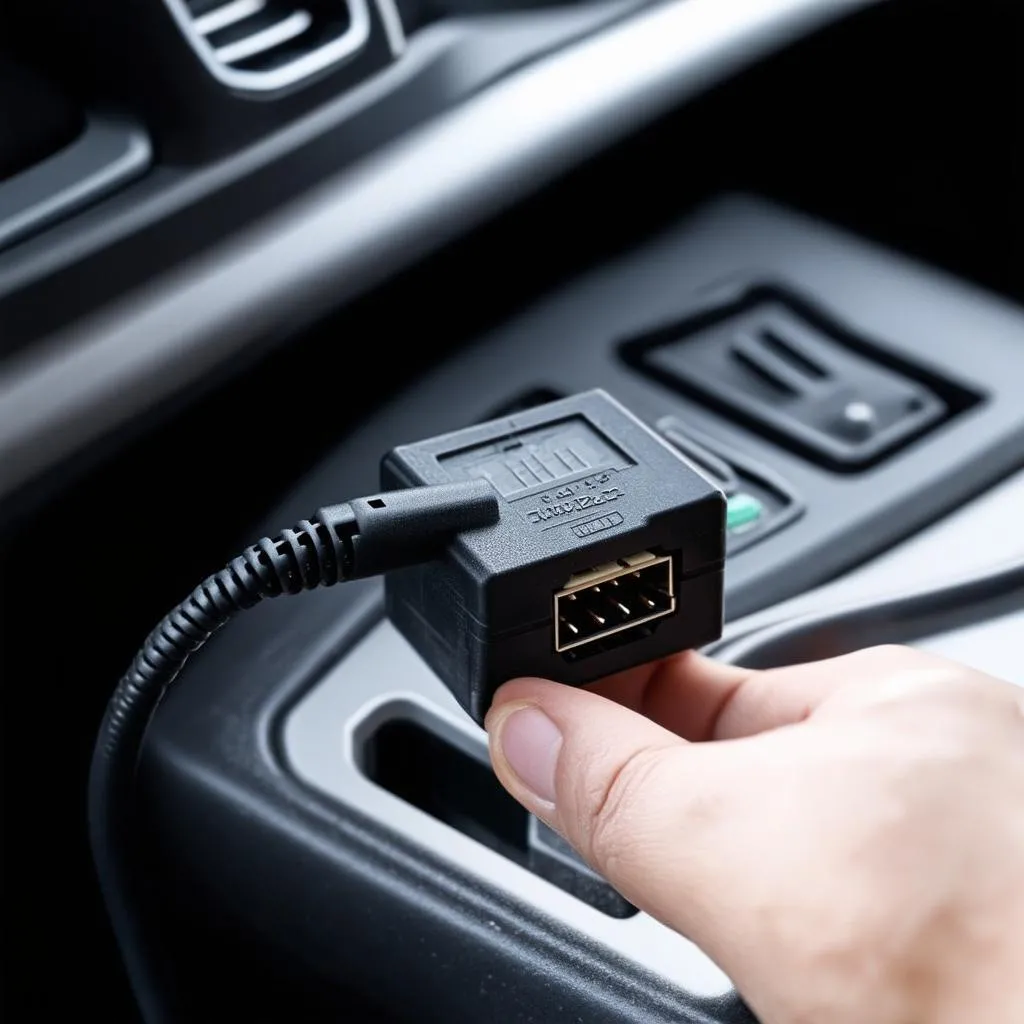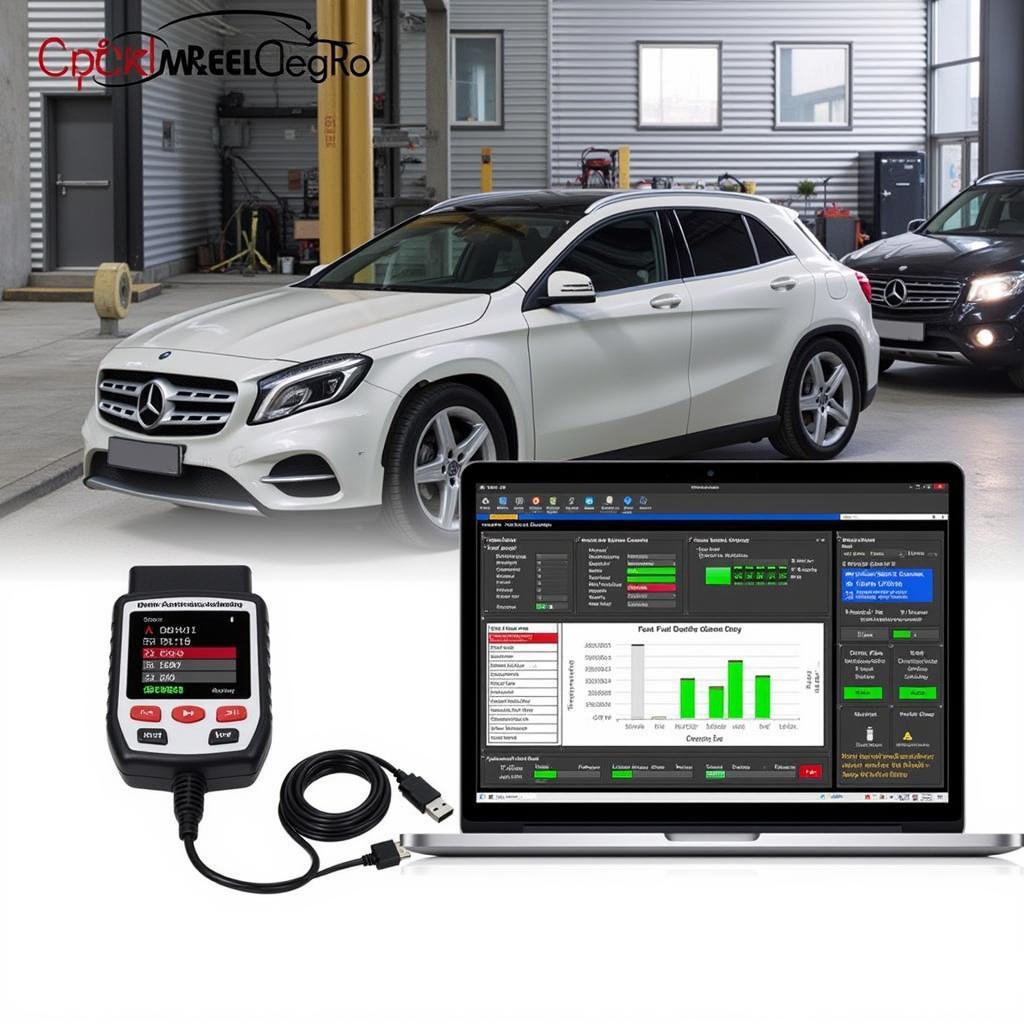If you’re driving a 2010 Mercedes E550, you know that keeping your Tire Pressure Monitoring System (TPMS) in good working order is essential for safety and optimal performance. But when it comes to programming or reprogramming your TPMS sensors, having the right tool can make all the difference. That’s where a 2010 E550 programmer tool for Mercedes TPMS comes in. This article will delve into the world of TPMS programmer tools, helping you understand what to look for, how they work, and why they’re crucial for your Mercedes.
Understanding TPMS and Why It Matters
Before we dive into the specifics of programmer tools, let’s briefly discuss what TPMS does. Your E550’s TPMS is designed to constantly monitor the air pressure in your tires, alerting you via a dashboard warning light if any of them fall below a safe threshold.
This system is crucial for several reasons:
- Safety: Underinflated tires can overheat and increase the risk of a blowout, especially at high speeds. TPMS provides an early warning, giving you time to address the issue before it becomes dangerous.
- Fuel Efficiency: Properly inflated tires reduce rolling resistance, which in turn improves your car’s fuel economy.
- Tire Longevity: Driving on underinflated tires causes them to wear down unevenly and prematurely. TPMS helps ensure optimal tire pressure, extending the life of your tires.
When Do You Need a TPMS Programmer Tool?
Several situations might necessitate the use of a TPMS programmer tool on your 2010 E550:
- New TPMS Sensors: If you’ve replaced your tires or had to replace a faulty TPMS sensor, the new sensors will need to be programmed to communicate with your car’s onboard computer.
- Rotating Tires: Even when rotating tires, some vehicles, including certain E550 models, might require TPMS reprogramming to ensure the system correctly identifies the location of each sensor.
- TPMS Light Stays On: If your TPMS warning light stays on even after checking and inflating your tires, it could indicate a problem with the sensors or the TPMS system itself. A programmer tool can help diagnose and potentially resolve the issue.
 TPMS sensor image
TPMS sensor image
What to Look for in a 2010 E550 Programmer Tool
Choosing the right programmer tool for your Mercedes is crucial. Here’s what to consider:
- Compatibility: Ensure the tool is explicitly compatible with your 2010 E550 model year. Not all TPMS tools work across all Mercedes-Benz vehicles.
- Functionality: Decide what functions are essential for you. Some tools offer basic programming, while others provide advanced features like sensor diagnostics, cloning, and the ability to work with multiple car brands.
- Ease of Use: Look for a tool with an intuitive interface, clear instructions, and ideally, a user-friendly display screen for easy navigation.
- Updates: TPMS technology evolves, so opt for a tool that offers software updates to ensure compatibility with the latest sensor types and vehicle models.
“It’s important to remember that investing in a quality TPMS programmer tool can save you time, money, and potential headaches in the long run,” advises automotive electronics expert Dr. Emily Carter, author of “Modern Automotive Systems Decoded.”
Using a TPMS Programmer Tool: A General Overview
While specific instructions can vary depending on the tool and your E550 model, here’s a simplified overview of how TPMS programming generally works:
- Connect the Tool: Connect the programmer tool to your car’s OBD-II port, typically located under the dashboard on the driver’s side.
- Enter Vehicle Information: Input your E550’s year, make, and model into the tool.
- Program the Sensors: Follow the tool’s on-screen prompts to program the new or existing TPMS sensors. This usually involves holding the tool near each tire while it transmits a signal to the sensor.
- Verify Programming: Once programming is complete, the tool will typically run a check to ensure the sensors are communicating correctly with the car.
 OBD2 port image
OBD2 port image
Benefits of Owning a Dedicated TPMS Programmer Tool
While some tire shops and mechanics offer TPMS programming as a service, owning your own tool comes with several advantages:
- Convenience: You can program sensors anytime, anywhere, without having to schedule an appointment or visit a mechanic.
- Cost Savings: Over time, programming your own sensors can save you money on repeated trips to the shop.
- Control and Knowledge: Having the right tool empowers you to take control of your car’s maintenance and troubleshoot issues as they arise.
FAQs about 2010 E550 TPMS Programmer Tools
Here are answers to some common questions:
Q: Can I program TPMS sensors myself?
A: Yes, with the right TPMS programmer tool, programming sensors is a manageable task for most car owners.
Q: How often do TPMS sensors need to be replaced?
A: TPMS sensors have batteries with a lifespan of around 5-7 years, after which they will need replacement.
Q: Can I use a universal TPMS tool on my Mercedes E550?
A: While some universal tools might work, it’s highly recommended to use a programmer specifically designed for Mercedes-Benz vehicles to ensure compatibility and accurate programming.
Q: What is the difference between programming and relearning TPMS sensors?
A: Programming typically refers to initially setting up new sensors, while relearning involves teaching the car’s system the new position of existing sensors after tire rotation.
Conclusion
A 2010 E550 programmer tool for Mercedes TPMS is an invaluable asset for any owner who wants to maintain optimal tire safety, performance, and longevity. With the right tool and a bit of knowledge, TPMS programming becomes a straightforward task, empowering you to take control of your car’s maintenance.
For more information about TPMS tools, diagnostic equipment, and other automotive electronics, connect with CARDIAGTECH. We offer a wide range of professional-grade tools to meet your needs.

